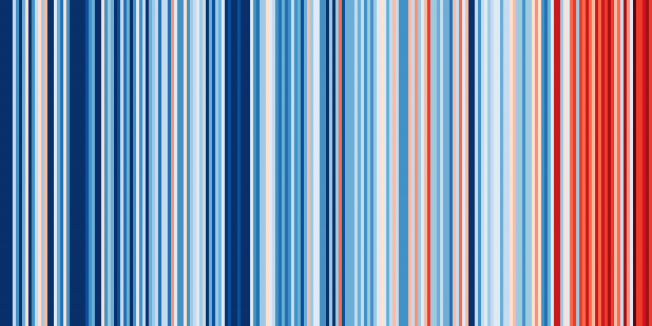Evaluation of probabilistic quality and value of the ENSEMBLES multimodel seasonal forecasts: Comparison with DEMETER
Monthly Weather Review 139:2 (2011) 581-607
Abstract:
The performance of the new multimodel seasonal prediction system developed in the framework of the European Commission FP7 project called ENSEMBLE-based predictions of climate changes and their impacts (ENSEMBLES) is compared with the results from the previous project [i.e., Development of a European Multimodel Ensemble System for Seasonal-to-Interannual Prediction (DEMETER)]. The comparison is carried out over the five seasonal prediction systems (SPSs) that participated in both projects. Since DEMETER, the contributing SPSs have improved in all aspects with the main advancements including the increase in resolution, the better representation of subgrid physical processes, land, sea ice, and greenhouse gas boundary forcing, and the more widespread use of assimilation for ocean initialization. The ENSEMBLES results show an overall enhancement for the prediction of anomalous surface temperature conditions. However, the improvement is quite small and with considerable space-time variations. In the tropics, ENSEMBLES systematically improves the sharpness and the discrimination attributes of the forecasts. Enhancements of the ENSEMBLES resolution attribute are also reported in the tropics for the forecasts started 1 February, 1 May, and 1 November. Our results indicate that, in ENSEMBLES, an increased portion of prediction signal from the single-models effectively contributes to amplify the multimodel forecasts skill. On the other hand, a worsening is shown for the multimodel calibration over the tropics compared to DEMETER. Significant changes are also shown in northern midlatitudes, where the ENSEMBLES multimodel discrimination, resolution, and reliability improve for February, May, and November starting dates. However, the ENSEMBLES multimodel decreases the capability to amplify the performance with respect to the contributing single models for the forecasts started in February, May, and August. This is at least partly due to the reduced overconfidence of the ENSEMBLES single models with respect to the DEMETER counterparts. Provided that they are suitably calibrated beforehand, it is shown that the ENSEMBLES multimodel forecasts represent a step forward for the potential economical value they can supply. A warning for all potential users concerns the need for calibration due to the degraded tropical reliability compared to DEMETER. In addition, the superiority of recalibrating the ENSEMBLES predictions through the discrimination information is shown. Concerning the forecasts started inAugust, ENSEMBLES exhibitsmixed results over both tropics and northernmidlatitudes. In this case, the increased potential predictability compared to DEMETER appears to be balanced by the reduction in the independence of the SPSs contributing to ENSEMBLES. Consequently, for the August start dates no clear advantage of using one multimodel system instead of the other can be evidenced. © 2011 American Meteorological Society.Decadal climate prediction with the European Centre for Medium-Range Weather Forecasts coupled forecast system: Impact of ocean observations
Journal of Geophysical Research Atmospheres 116:19 (2011)
Abstract:
Three 10 year ensemble decadal forecast experiments have been performed with the European Centre for Medium-Range Weather Forecasts coupled forecast system using an initialization strategy common in seasonal forecasting with realistic initial conditions. One experiment initializes the ocean in a standard way using an ocean-only simulation forced with an atmospheric reanalysis and with strong relaxation to observed sea surface temperatures. The other two experiments initialize the ocean from a similar ocean-only run that, in addition, assimilates subsurface observations. This is the first time that these experiments were performed. The system drifts from the realistic initial conditions toward the model climate, the drift being of the same order as, if not larger than, the interannual signal. There are small drift differences in the three experiments that reflect mainly the influence of dynamical ocean processes in controlling the adjustment between the initialized state and the model climate in the extratropics. In spite of the drift, the predictions show that the system is able to skillfully predict some of the interannual variability of the global and regional air and ocean temperature. No significant forecast quality benefit of the assimilation of ocean observations is found over the extratropics, although a negative impact of the assimilation of incorrect expendable bathythermograph profiles has been found for the global mean upper ocean heat content and the Atlantic multidecadal oscillation. The results illustrate the importance of reducing the important model drift and the ocean analysis uncertainty. Copyright 2011 by the American Geophysical Union.Assessment of representations of model uncertainty in monthly and seasonal forecast ensembles
GEOPHYSICAL RESEARCH LETTERS 38 (2011) ARTN L16703
Decadal climate prediction with the European Centre for Medium-Range Weather Forecasts coupled forecast system: Impact of ocean observations
JOURNAL OF GEOPHYSICAL RESEARCH-ATMOSPHERES 116 (2011) ARTN D19111
Model uncertainty in seasonal to decadal forecasting - insight from the ENSEMBLES project.
ECMWF Newsletter ECMWF 122 (2010) 21-26



